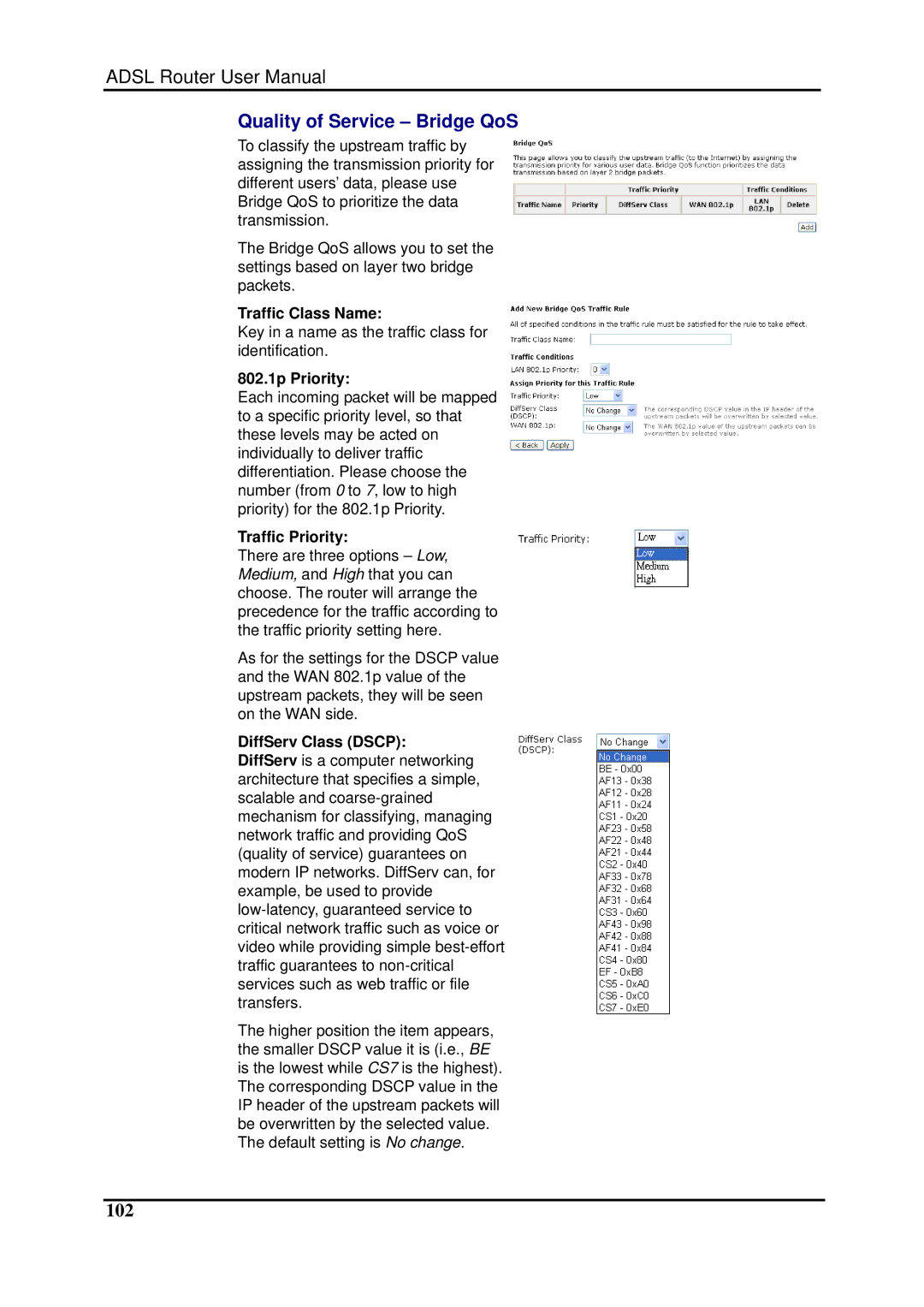
ADSL Router User Manual
Quality of Service – Bridge QoS
To classify the upstream traffic by assigning the transmission priority for different users’ data, please use Bridge QoS to prioritize the data transmission.
The Bridge QoS allows you to set the settings based on layer two bridge packets.
Traffic Class Name:
Key in a name as the traffic class for identification.
802.1p Priority:
Each incoming packet will be mapped to a specific priority level, so that these levels may be acted on individually to deliver traffic differentiation. Please choose the number (from 0 to 7, low to high priority) for the 802.1p Priority.
Traffic Priority:
There are three options – Low, Medium, and High that you can choose. The router will arrange the precedence for the traffic according to the traffic priority setting here.
As for the settings for the DSCP value and the WAN 802.1p value of the upstream packets, they will be seen on the WAN side.
DiffServ Class (DSCP): DiffServ is a computer networking architecture that specifies a simple, scalable and
The higher position the item appears, the smaller DSCP value it is (i.e., BE is the lowest while CS7 is the highest). The corresponding DSCP value in the IP header of the upstream packets will be overwritten by the selected value. The default setting is No change.
